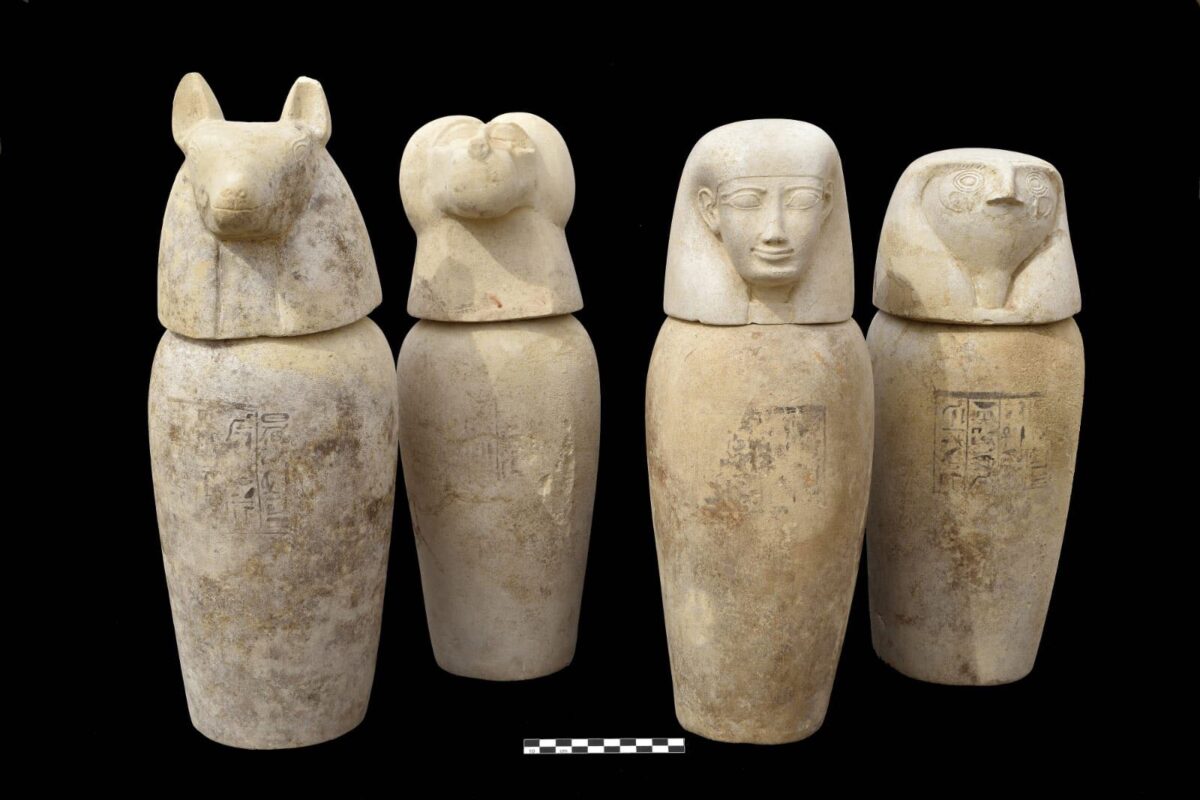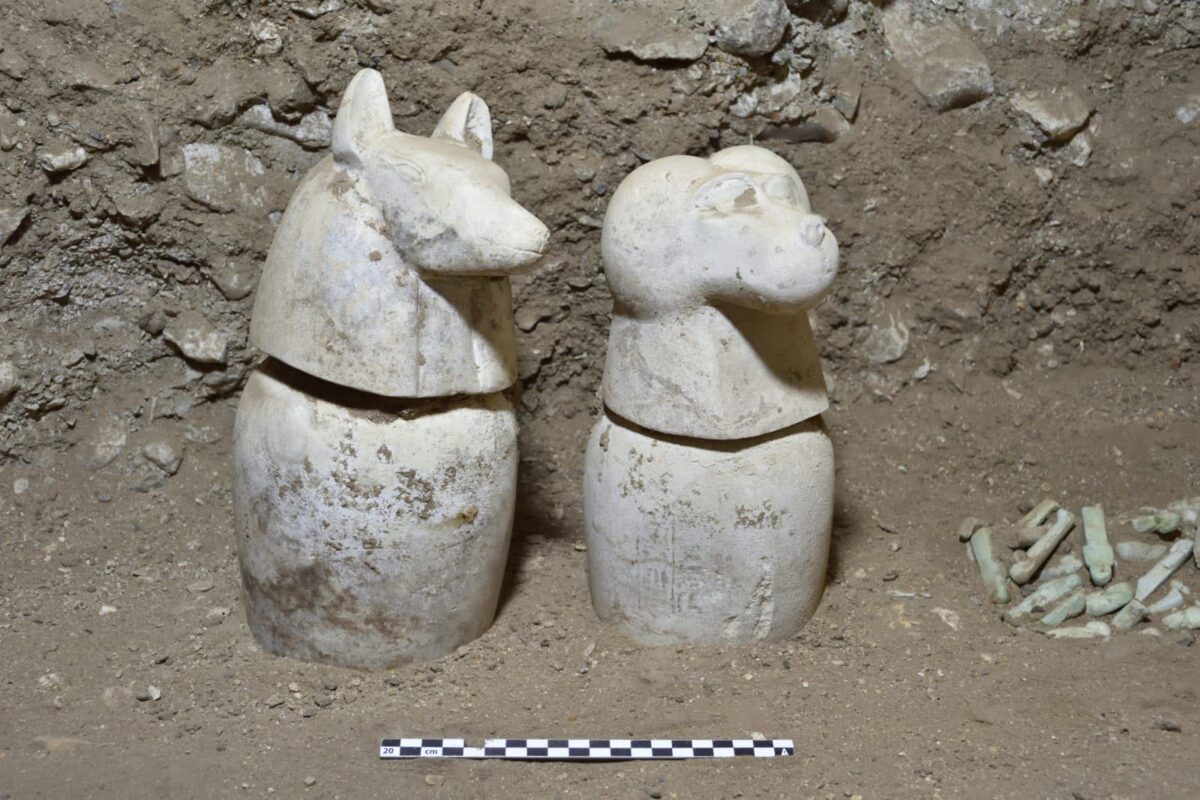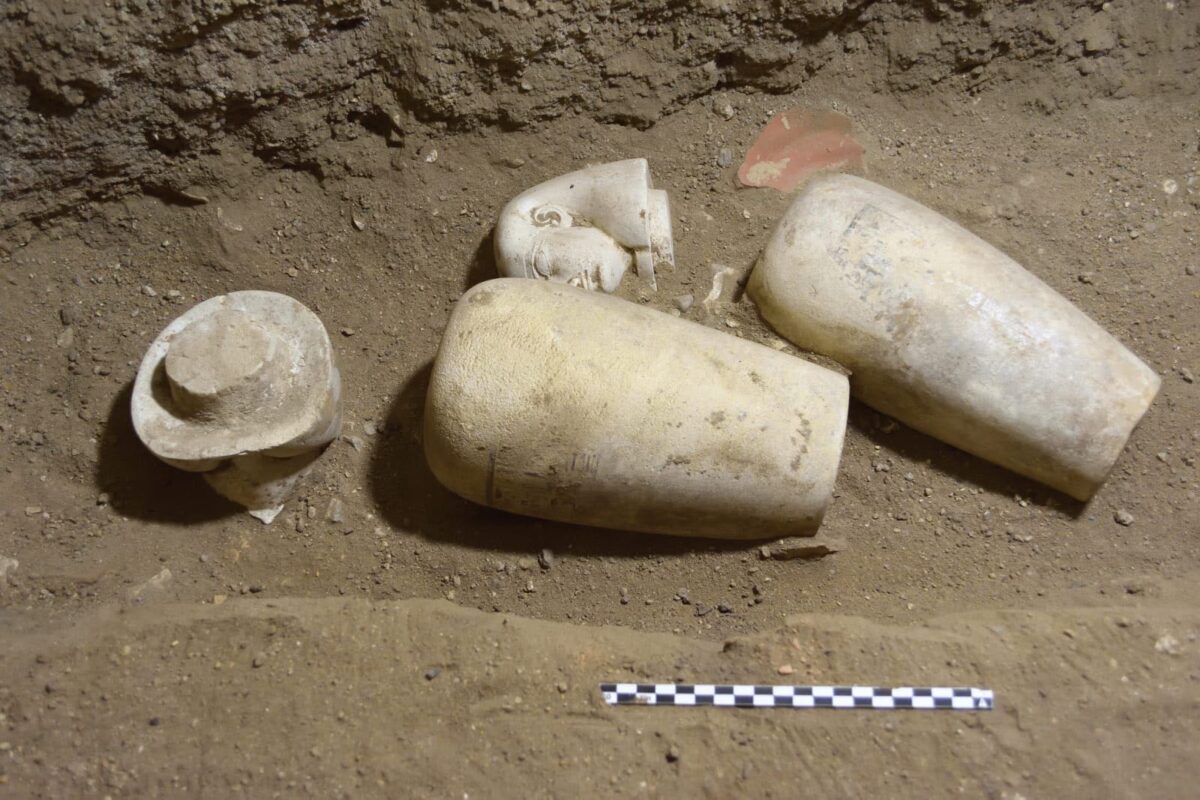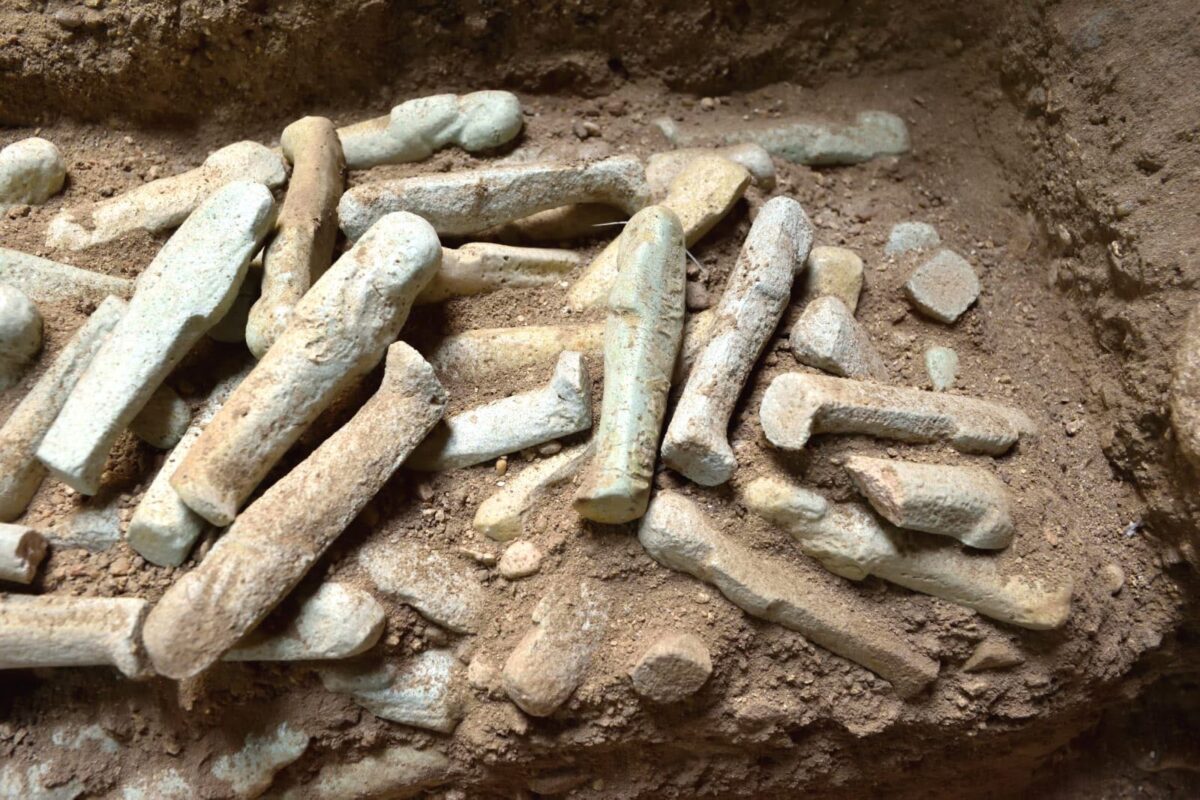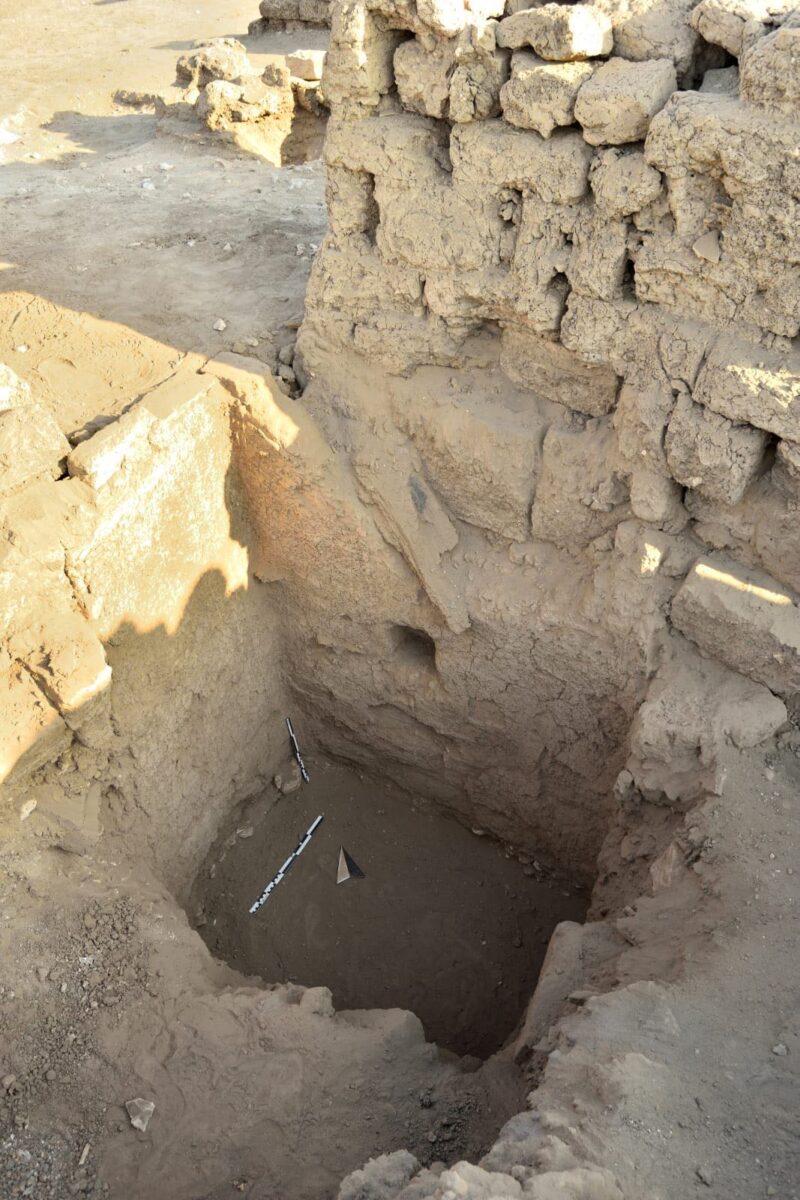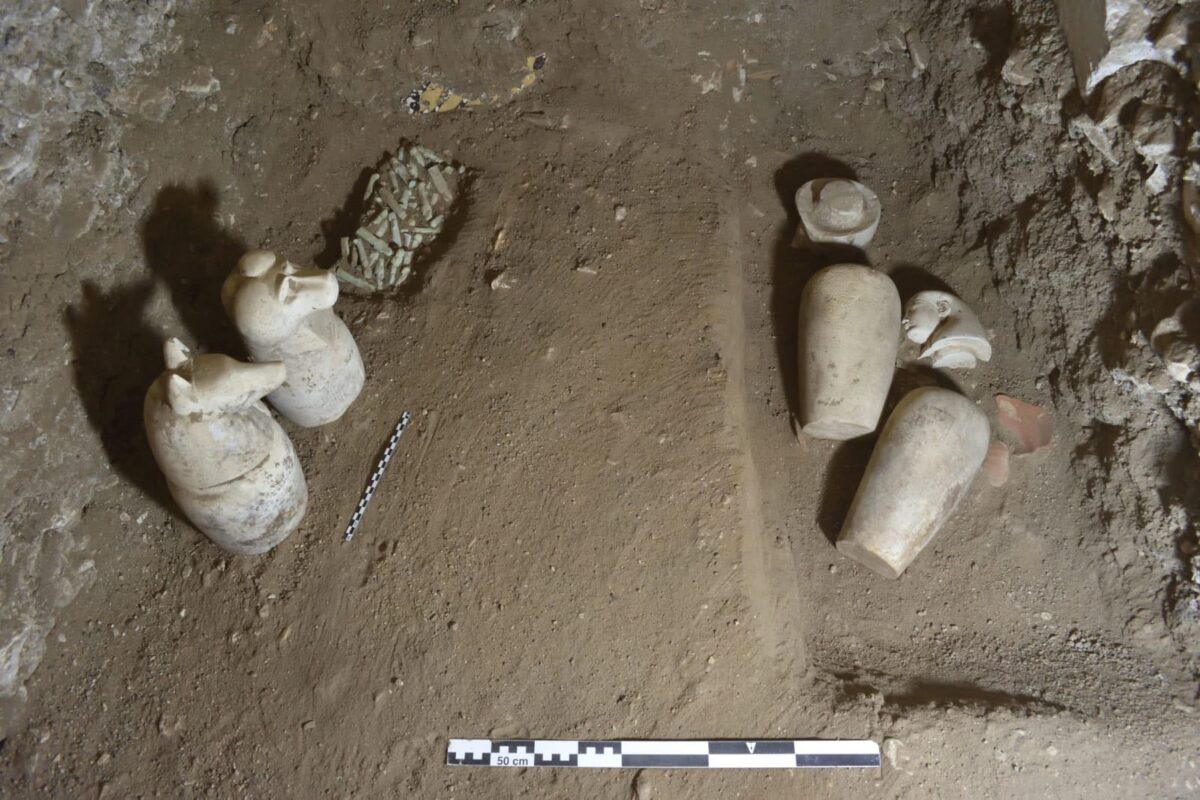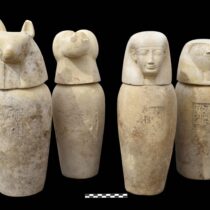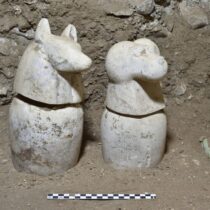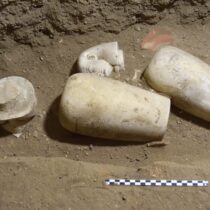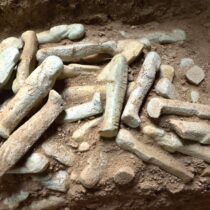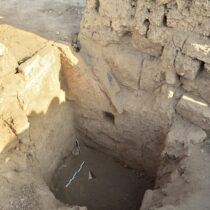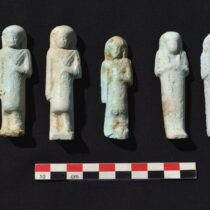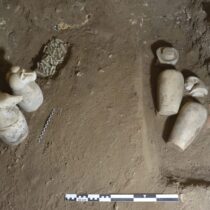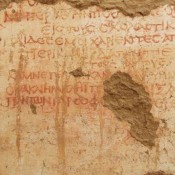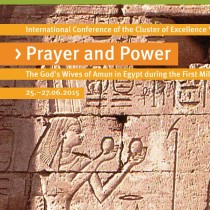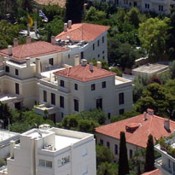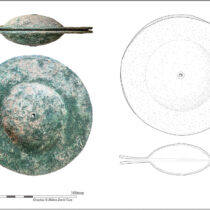New discoveries at the Ramesseum Temple in Luxor, Egypt, shed light on the site’s history during and well after its creation and use as the mortuary temple of Pharaoh Ramesses II (1279-1213 BCE).
A joint Egyptian-French archaeological mission—comprising the Department for the Conservation and Documentation of Antiquities at the Supreme Council of Antiquities, the French National Center for Scientific Research, and Sorbonne University—has uncovered several tombs from the Third Intermediate Period (c. 1077-656 BCE) and storage areas for olive oil, honey, and fats. The team also discovered weaving and stone workshops, kitchens, and bakeries during their excavations in the vicinity of the Ramesseum Temple on Luxor’s West Bank.
Excavations within the temple led to the discovery of a “House of Life” (a scholarly institution attached to major temples). This is considered an exceptional find as it not only revealed the architectural layout of the educational institution but also a rich collection of artifacts including drawings and school-related games—marking it as the first evidence of a school within the Ramesseum, also known as the “Temple of Millions of Years.”
Further excavations revealed a group of buildings on the eastern side of the temple that are believed to have been administrative offices. Meanwhile, buildings and cellars on the northern side were used for storing olive oil, honey, and fats. Numerous wine jar labels found in these cellars suggest their use as wine storage areas.
Excavations in the northeastern area uncovered a large number of tombs dating back to the Third Intermediate Period. Most of these tombs contained burial chambers and shafts holding well-preserved canopic jars and funerary items, along with nested coffins. A total of 401 shabti statues made from pottery and a collection of scattered bones have also been discovered.
Mr. Sherif Fathy, Egypt’s Minister of Tourism and Antiquities, praised the mission’s efforts to uncover new secrets about the history of the Ramesseum and the religious and societal role it played in ancient Egypt.
Dr. Mohamed Ismail, Secretary-General of the Supreme Council of Antiquities, emphasized the importance of these discoveries at the Ramesseum. According to Dr. Ismail, these new discoveries in the Ramesseum shed new light on the temple’s long and complex history and open new horizons for understanding its role in ancient Egypt. The findings enhance our knowledge of this temple, which dates back to the New Kingdom, particularly the Ramesside era.
The Ramesseum functioned as a royal institution where rituals were performed to deify the king during his lifetime. It also played a significant administrative and economic role. The discoveries suggest a complete hierarchical system of civil employees operating within the temple. Far from being just a religious site, the Ramesseum also served as a distribution center for stored or manufactured products that benefited local residents—including the artisans of Deir el-Medina, who were under royal authority as part of the provincial system.
Scientific studies confirmed that the site of the Ramesseum was occupied even before Ramesses II built his temple. It was later reused in various periods, eventually becoming a large priestly necropolis after being looted (for further finds from this necropolis see here). In the Ptolemaic and Roman periods (30 BCE to CE 395), the site was used by quarry workers.
Dr. Hisham El-Leithy, Head of the Department for the Conservation and Documentation of Antiquities at the Supreme Council of Antiquities and the mission leader on the Egyptian side, noted that the team managed to re-excavate the tomb of Sehetep-ib-Re located in the northwestern part of the temple. This tomb, dating back to the Middle Kingdom, was originally discovered in 1896 by British archaeologist Quibell and is notable for its well-preserved funerary scenes.
He added that the mission continues its excavation efforts in the hope of uncovering even more in the coming period. Recently, the team completed the restoration of the southern side of the hypostyle hall to the Holy of Holies area, including the restoration of the first court. They reassembled and relocated all the fragments belonging to a statue of Tuya, mother of King Ramesses II, to its original place south of the king’s statue. They also reassembled fragments of Ramesses II’s statue, restored the legs, returned them to their base, and studied the statue’s condition.
Dr. Christian Leblanc, head of the mission on the French side, added that the team also restored the royal palace adjacent to the temple’s first court. Thanks to the mission’s work, the original layout of the palace is now evident, although only a few column bases remain from its ancient architecture. The excavations revealed the complete mudbrick layout, including a reception hall and a throne room where the king held audiences during his stay at the Ramesseum.
In the area of the second pylon gate, part of a granite lintel was uncovered depicting Ramesses II deified before the god Amun-Ra, along with remnants of a cornice originally topped with a frieze of baboons.
The mission also cleared debris from the northern and southern processional ways, uncovering several finds from the Third Intermediate Period. It was determined that this section of the temple featured a processional route flanked by animal statues resembling Anubis reclining atop small shrines. Many of these statue fragments have now been collected and restored.
It is worth noting that the Egyptian-French mission has been working at the Ramesseum Temple for 34 years—since 1991—carrying out excavation and restoration work throughout the entire temple. For more see also here.
